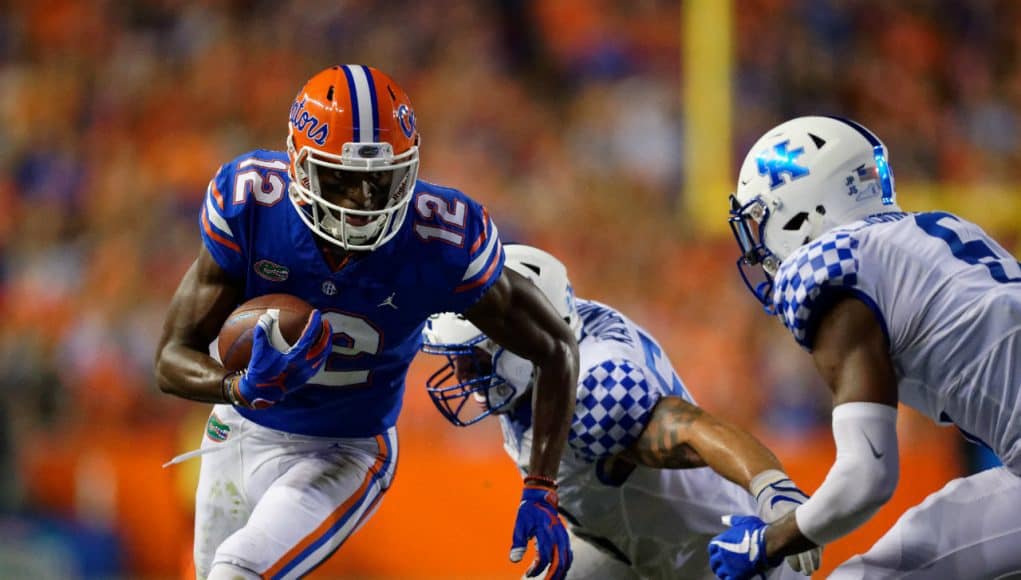The Gators officially produced another first round pick in the NFL Draft with CJ Henderson going ninth to the Jaguars. If you’re like me, you’ve been expecting him to go in the opening round since seeing him play as a freshman. His skills were always apparent, and his speed is something you can’t teach.
I think Henderson will be a terrific pro player and has the upside worth a top ten pick, but taking anyone that highly incurs a significant opportunity cost. Consider the team that took him. The Jags needed a corner, but they also have offensive line needs. As it turned out, three of the next four picks after Henderson were offensive linemen. There also is value for a 6-10 team to trade down if possible and just get more picks.
Henderson will need to become a Pro Bowl regular for Jacksonville to get excellent value from the selection. I wouldn’t bet against it, but that’s a high bar.
The selections past the first day are where the best value picks tend to be found. Sometimes guys like Orlando Pace or Payton Manning turn out to be top values even from the No. 1 spot, but it’s better for a team to get a consistent starter with high-end potential below the first round.
I think a team will get that — a consistent starter with high-end potential — from a Gator who’s still on the board after the first round: Van Jefferson.
I totally get why he was not among the top tier of receivers chosen with Henry Ruggs, Jerry Jeudy, and CeeDee Lamb. Those guys put up ridiculous numbers in high powered offenses. They have that speed you can’t teach like Henderson does. If they come through on their visible potential, they’re game-changing prospects.
Jefferson doesn’t have that kind of speed, though he’s plenty fast enough. He’s shown he’s fast enough despite a foot injury discovered at the Combine he’s had for who knows how long. What sets him apart is his superior technique.
Being the son of an NFL receivers coach, Jefferson was the best route runner on the team from the moment he walked onto campus. A couple of years under Billy Gonzales only helped refine him and make him into maybe the most fundamentally sound receiver I’ve seen play at Florida. As I watched the Spurrier teams in the ’90s, that’s a significant statement to make. The next time he runs a bad route will be his first in many years.
The foot injury cutting his Combine short was one factor in preventing him from going up higher on draft boards. The offenses he played in at UF didn’t help his cause as much as some others could’ve.
That’s no slight to Dan Mullen; there is more than one way to score points in football and Florida’s is not set up to generate gaudy passing numbers. Mullen ran plenty in his first campaign to keep pressure off his work-in-progress quarterback. He threw plenty last year with an offensive line that couldn’t run block, but a good number of throws were run replacement plays. Playing against type for the “offensive genius” label that sometimes gets affixed to him, Mullen likes to control the ball and protect his defense. That he does it while also putting up more than 30 points per game is a credit to his skill as a architect and play caller.
Quarterbacks always play a role in receiving performance too. In 2018, Jefferson was a frequent deep ball target for Feleipe Franks. He also was frequently overthrown by Franks. It’s hard to push a yards per catch rate up where Ruggs and Lamb are when those long targets sail five yards over your head.
Even despite that factor, Jefferson had a higher yards per catch rate with Franks because Franks’s strong arm helped him complete longer passes. Kyle Trask is a heady quarterback, but he doesn’t have a howitzer. In addition to doing extended run passes, he just didn’t attempt as high a rate of long throws as Franks did. Even taking Kadarius Toney’s 66-yard screen out of things, Franks’s yards per completion rate in 2019 was 0.7 yards longer than Trask’s.
It works like this everywhere, even the place that just produced a pair of top 15 wide receiver selections. When Alabama was trying to protect true freshman Jalen Hurts in 2016, sophomore Calvin Ridley had 10.7 yards per catch. As the Tide opened things up more with a sophomore Hurts in 2017, junior Ridley was up to 15.4 yards per catch. That Jefferson declined from 14.4 to 13.4 across ’18 to ’19 is no cause for concern because of factors beyond his control.
Barring unpredictable injury problems, Jefferson should have a very long pro career. He could easily be a guy who gets a one-year contract in 2040, leading fans to say, “woah, that guy’s still in the league?”
Yes, he still will be in the league because he’s smart, driven, and immensely skilled. Someone is going to get a decade-plus starter below the first round when it selects Jefferson. That’s real value.


